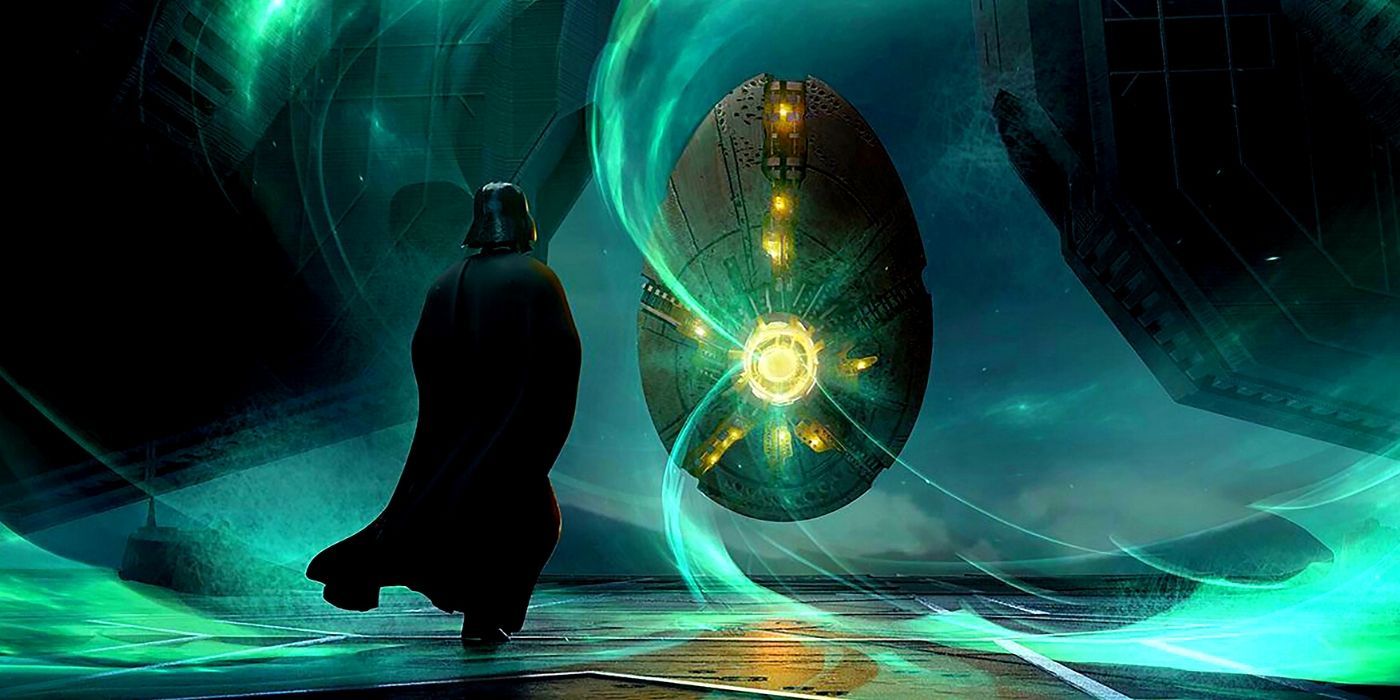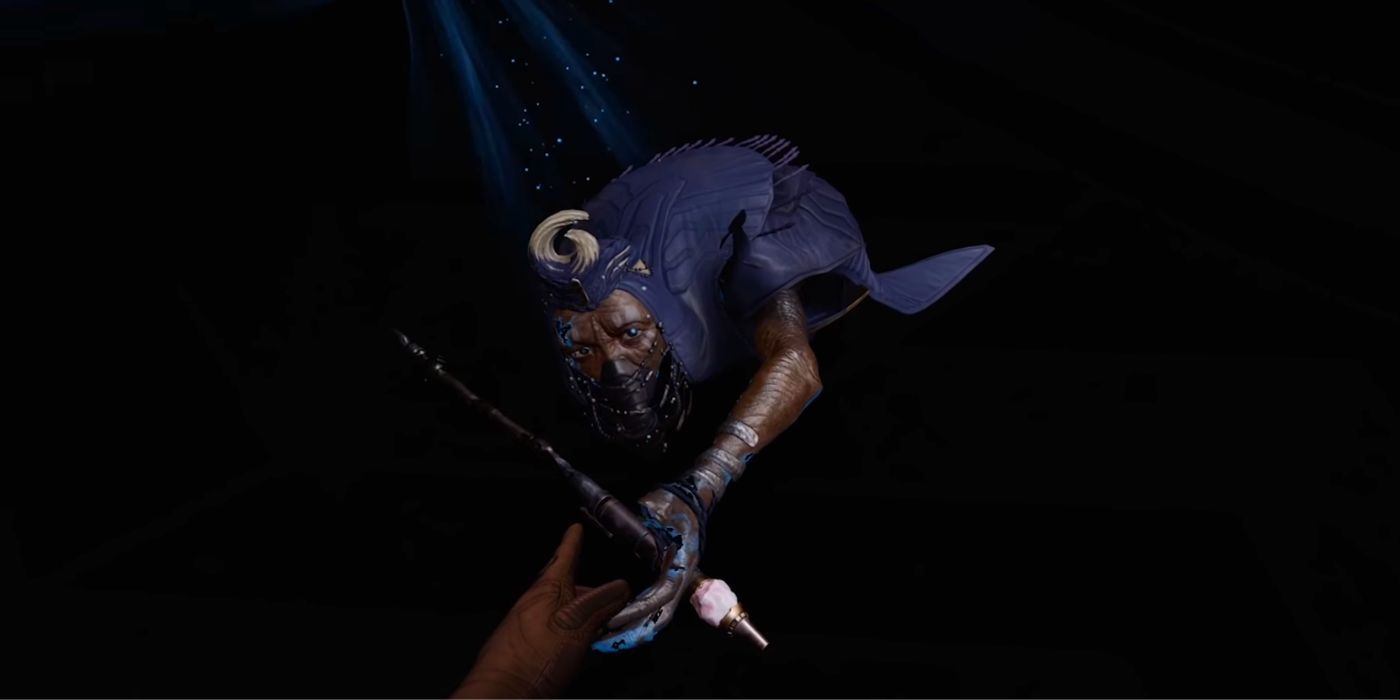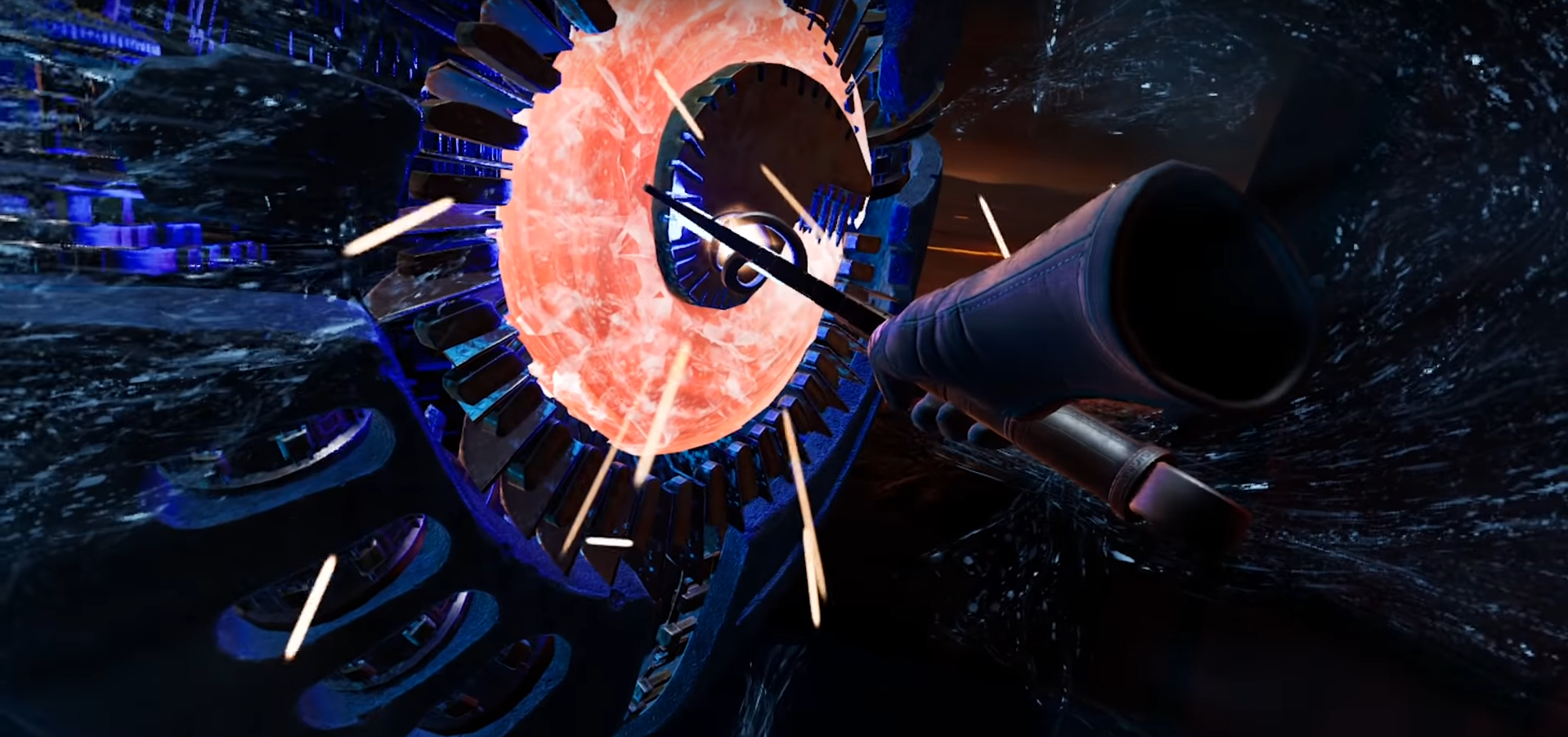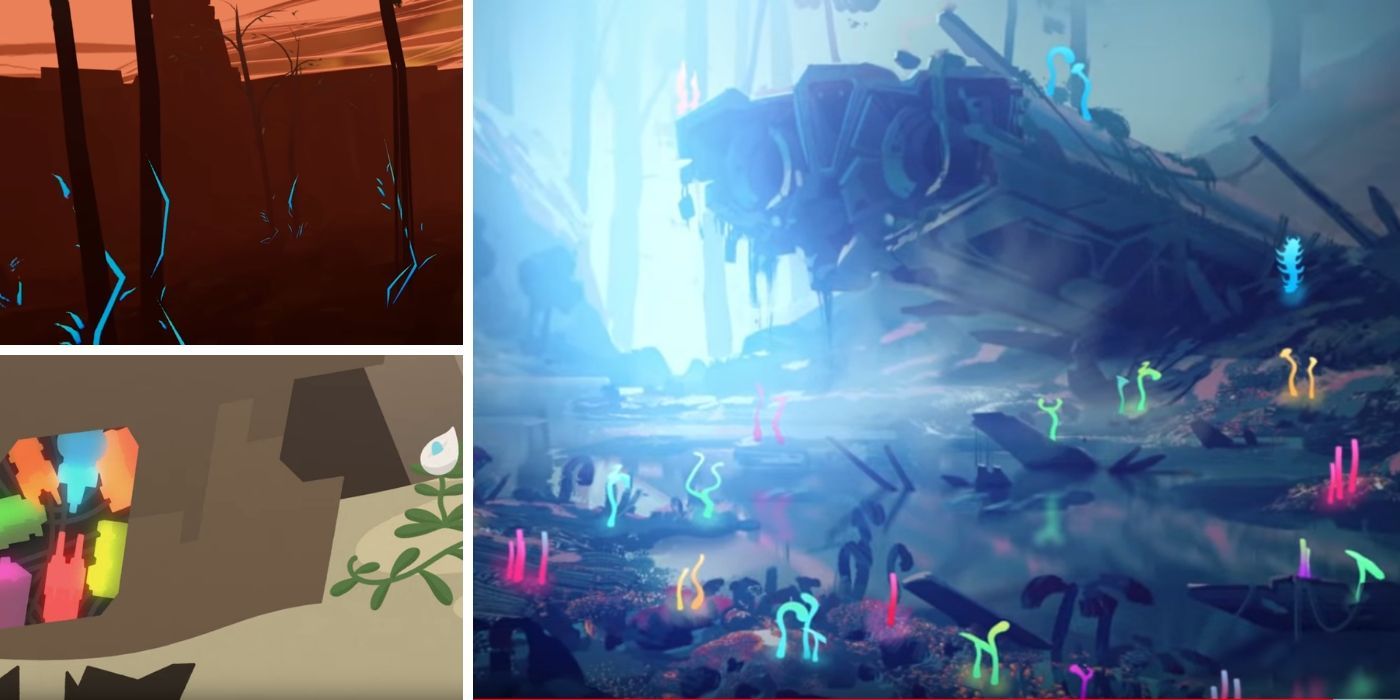The Star Wars virtual-reality experience Vader Immortal has released its third and final episode in Darth Vader's castle on Mustafar. In it, the player tries to stop the Sith Lord from draining what remains of life on the planet through the Eon Engine, an ancient machine powered by the Brightstar, a massive kyber crystal, in an effort to resurrect Padmé.
The Eon Engine was created by Lady Corvax, who was so devastated by the loss of her husband that she built device and stole the Brightstar to attempt the same thing that Vader did. She failed, however, devastating Mustafar and trapping Lord Corvax "in a prison of time between life and death." Nevertheless, the portal that she created, the Engine and the Brightstar remained virtually intact for millennia.
RELATED: Vader Immortal Might Reveal the True Purpose of the Death Star
Vader Immortal is not subtle in conveying, visually, that the Brightstar and the Eon Engine are the two main components of primitive Death Star technology. The Brightstar looks like a massive, spiral kyber crystal, similar to the ones that the Nightsisters use on Dathomir. The center of the Engine looks exactly like Starkiller Base (basically a massive Death Star).
However, the other side of the coin hadn't been explored: One of the properties of kyber crystals is to promote life -- to a certain degree, that is. Apparently, they can also accumulate enormous amounts of life force, draining it from the environment, channeling it to pierce the veil between the living and the dead. In theory, that's it.
That's spelled out in the game. Mustafar's priestess, a guide who acts remarkably like Obi-wan Kenobi in A New Hope, says, "The Brightstar represents the life energy of an entire world. If the moment presents itself, you must destroy the Eon Engine." But then she adds, as the player approaches the Engine, "It's draining my life force. You must stop it before he drains the vitality of every being in this planet."
The priestess falls to her knees and vanishes in front of the player's eyes. At the same time, Vader speaks to a shadow of Padmé, reassuring her he will try to make her his once more, no matter the cost. "If the energies of this world are not enough, there are countless others," he tells her with his usual charm.
Lord Corvax himself puts an end to the madness, assisting the player to plunge his lightsword into the Eon Engine. "Lord Vader believes that his willpower can achieve what Lady Corvax could not," he says. "Instead, he will tear this world apart to resurrect shadows. The Eon Engine must be destroyed."
Once the Eon Engine is destroyed, the player has a vision not of Lord Corvax holding the Brightstar on another plane above Fortress Vader, but of the lava planet beginning to heal, with the shadows of future trees and plants rising to create a canopy of greenery.
"You have my gratitude. You have freed me from the prison of time, and in doing so, righted our wrongs," says Lord Corvax. "The priestess was right. The energy from the Brightstar now flows through Mustafar. Slowly, our world will begin to heal."
RELATED: Midi-Chlorians: In Defense of Star Wars' Most Hated Device
The idea that kyber crystals are associated with life was presented in two sneaky Star Wars animations: one is Rey's adventure in the Star Wars Kids Roll Out YouTube series, and the other one is the Deutsche Grammophon animated music video for John Williams' violin rearrangement of Across the Stars, Anakin and Padmé's love theme. The visuals are strikingly similar: shiny neon objects, issued from technology, surrounded by greenery -- and in some cases, as on Mustafar and Jakku, two devastated planets connected with the dark side of the Force healing it from the inside.
This opens up a world of possibilities. In Rogue One, Chirrut Imwe mentions that, "The strongest stars have hearts of kyber," but could this apply to living planets too? For instance, we know that Ilum, which later became Starkiller, was a massive frozen planet that grew kyber crystals naturally. Did this proliferation of kybers explain its freezing weather (they were retaining all the energy)?
Jedha, on the other hand, was a thriving city on a desert planet that suffered the impact of a kyber asteroid -- did this create life in that place in the first place? What about Naboo, where Queen Amidala and the leader of the Gungans share a large, spherical gem in The Phantom Menace? Is that a kyber crystal too, and does the act of holding it together improve its balance and protect the planet of Naboo itself?
But most of all, because Star Wars tends to make things rhyme across its media, what does this mean for the Force itself? If a powerful Force-wielder was slain, say, Palpatine, or Kylo, or Rey, would that mean that their powers would be released and shared amongst every living being? Have the Sith and the Jedi had a monopoly on the Force for millennia when it was supposed to belong to everyone? If so, what kind of Brightstar or Death Star will be destroyed in The Rise of Skywalker, and where will this concept take the entire franchise?




